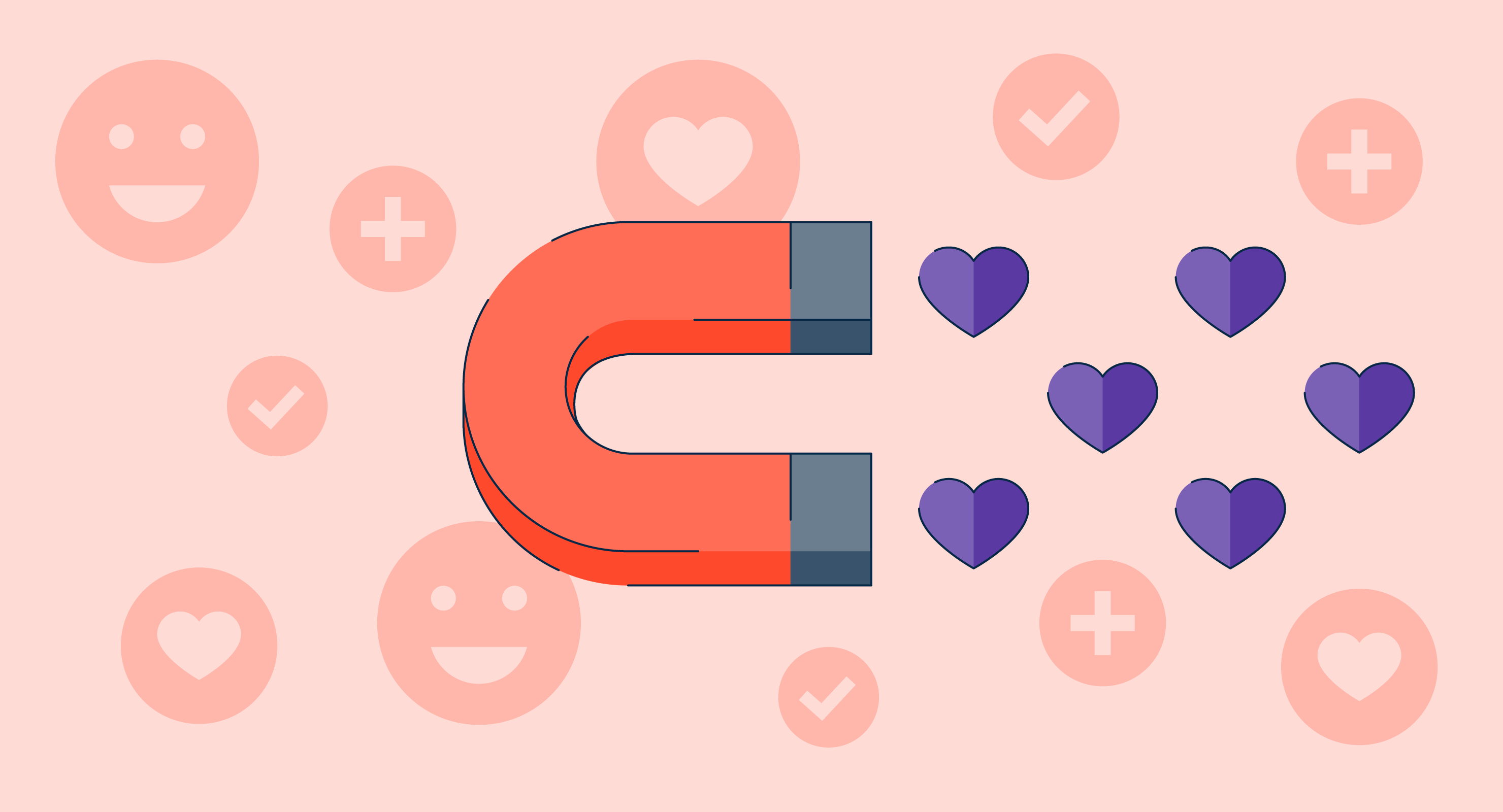Managing employees is a lot like managing a relationship — people only stick around if they're happy.
But how can you be sure your employees are happy with the way things are being run in the workplace? That’s where employee relations come into play.
What is employee relations?
Employee relations (ER) refers to a company's efforts to build, strengthen, and maintain positive relationships between employees and their employer.
Also referred to as employee relationship management, the primary purpose is to strengthen the bond between employers and their employees by identifying and resolving workplace issues, improving employee satisfaction and morale, and providing necessary support to the organization’s performance management processes.
It’s common for companies to utilize employee engagement software to collect feedback from their staff, making it easy to pinpoint how they can improve employee sentiment and ensure workers are happy and feel safe at work.
Some examples of employee issues handled by an employee relations manager are:
- Frequent unplanned absences from work
- Showing little respect to their manager or supervisor
- Gossiping about team members and getting into disputes with coworkers
- Always showing up late to meetings
- Unable to be reached when working from home
- Violating safety rules
Employee relations vs. human resources
Employee relations are sometimes confused with human resources (HR) or human resource management (HRM). However, this isn’t the case as there are key differences between ER and HR.
Employee relations focus on improving the employee experience. Individuals in this role listen to feedback and provide emotional and professional support to employees. They’re also a liaison between employees and management.
On the other hand, human resources focus on managing and developing employees, as well as recruiting candidates to join the organization, managing payroll, and enforcing various company policies.

Essentially, employee relations is just one part of the overall function of an HR department. When the two come together, they ensure that employees feel safe at work.
¿Quieres aprender más sobre Software de Compromiso de Empleados? Explora los productos de Compromiso de los empleados.
Types of employee relations
When learning the ins and outs of employee relations, there are two main types to understand. Both are hierarchical and when they come together, they make for a happy and productive workplace.
The first is vertical employee relations, which refers to the relationship between an employee and their manager. This type helps support managers who are communicative, empathetic, friendly, and appreciative of their employees and direct reports. These managers are also open to new ideas from their team as they create a boss-employee bond.
Secondly, horizontal employee relations represent the relationship between fellow team members or employees on the same level within the organization. This is the bond employees form when taking lunch breaks together, working on the same project or assignment, or interacting through casual conversations a few times a day.
50%
of employees with a best friend at work felt a strong connection with their company.
Source: OfficeVibe
What do employee relations professionals do?
Understanding employee relations is a crucial part of effective human resource management. Professionals in this role typically do the following day-to-day:
- Curate and send feedback forms to employees regarding a proposed policy change
- Collect and analyze employee data
- Conduct exit interviews as part of the offboarding process
- Encourage managers and team leads to meet monthly (at a minimum) to foster open communication with their direct reports
- Recognize employees when they accomplished a special achievement or go above and beyond in their role
- Come up with ways to show employees that the organization cares about them, usually by throwing various holiday parties, developing a professional development budget, or building a wellness or employee assistance program
- Address any employee complaints, concerns, and misconduct with appropriate disciplinary actions through dispute resolution
- Update the employee handbook when company rules are changed or made
- Develop and manage compensation and benefits plans
How can employee relations enhance the workplace?
When done correctly, there are many benefits to instilling employee relations efforts within an organization.
Reduce workplace conflicts
No one likes conflict or drama at work, and employee relations can help ensure these issues are few and far between. Striving for a calm, friendly, and efficient workplace means that conflicts, clashes, and disputes are reduced. When these issues arise, having employee relationship managers who know how to investigate and mediate can help to kick drama to the curb.
Improve employee loyalty and retention
Exceptional employee relations can also lead to increased employee loyalty and retention. When employees feel more loyal to organizations that care about their needs, acknowledge their hard work, and openly communicate policy changes.
Similarly, more loyalty means employees are less likely to apply to other jobs, making it easier to retain top talent long-term.
Promote employee engagement
Some organizations think they can boost employee engagement with beer on Fridays and a ping pong table - but those organizations have it wrong.
Instead, invest in your employees’ happiness. Having a strategy built with employee relations in mind will create an environment where employees are more engaged in their work and the organization's goals.
Boost productivity
Employee relations can also boost productivity. It’s easy to make the connection between happy employees and productive employees. Organizations can improve employee morale by taking the time to increase communication and build relationships. Allowing employees to establish a better work-life balance also improves productivity.
No matter the industry, people thrive at work when they feel understood, cared for, and respected. Fostering a work environment where everyone can perform their best makes it possible for the rest to fall into place.
Increase revenue
What happens when employees are productive and hit more goals? You’ll likely see a positive impact on the growth of revenue. Happier, motivated employees usually result in better customer service and improved products and services, ultimately increasing profits and sales.
How to improve employee relations
If you feel like there’s room for improvement within your employee relations strategy, try implementing the following tactics to see progress in the right direction.
Promote honest communication
Promoting honest communication is a great place to begin when cultivating a successful employee relations program. When improving the dynamic between employees and employer, you’ll need to create an environment where everyone is comfortable sharing their thoughts, ideas, and feedback.
An employee relations manager needs to properly convey important notices, policy changes, and company updates while developing a bond with the staff. At the same time, employees need to approach management with their questions and concerns without being afraid to speak up.
Recognize and appreciate hard-working employees
When employees feel like their hard work and dedication isn’t appreciated or even acknowledged, chances are good they’ll seek employment elsewhere.
A key component of employee relations is making sure staff feels valued and appreciated. It should never be assumed that employees know their managers see and appreciate everything they do for the organization. It should be a priority to recognize a job well done and put the spotlight on your highest performers.
Invest in the career development of your team
Your organization is going to grow and change, and your employees should do so with it.
In an increasingly competitive job market, employees are more concerned than ever about developing and learning new skills to ensure they remain desirable to employers. It’s up to employee relations to prioritize career development as part of their strategy. Fostering an environment where employees can grow their skillset and succeed in their role will improve employee relations and strengthen bonds within the organization. When you invest in your employees, you’ll see that they invest back into your organization.
Trust your team
Put simply, if you want to have strong employee relations, never micromanage your team.
Once you’ve clarified what's expected of your employees, communicated what their responsibilities are, and given them the tools they need to succeed, let them be. Trust that they’ll get the job done and come to you if they experience bottlenecks or roadblocks.
Managers should consider having weekly one-on-one check-ins with their direct reports to discuss their workload and answer any questions. Then, managers should trust that the employee is working diligently on their tasks.
Share information surrounding the company’s vision
Once you master communication, be sure to frequently and properly communicate the company’s mission and vision. Do your employees know what the goal is for the end of the year? What about the goal for the next five years?
The first step to getting behind the vision is to know what it is. Then, everyone can come together and work toward achieving it.
Ask for employee feedback
No organization is perfect, and employees often have ideas on how to improve. Be sure to regularly ask for feedback, whether it’s about the overall company culture, using a specific software, changes to the onboarding process, or a specific company policy.
This can be done face to face during meetings or anonymously in employee engagement surveys. It’s important that employees feel heard and have a safe space to share ideas or concerns. Don’t take this feedback lightly!
Never play favoritism
If you want to build a workplace that’s inclusive for everyone, then you can never play favorites. Employee relations is about making sure all employees feel empowered to speak up and share ideas or concerns, knowing their voice will be heard.
Encourage social interactions
There’s a difference between fun social interactions and employees gathering around the water cooler to engage in workplace gossip. Employee relations managers should encourage workers to form appropriate relationships in fun ways.
For instance, you can encourage cross-departmental lunches or small events like karaoke, trivia night, or office holiday parties to help form camaraderie between employees.
Choosing the best employee engagement tool motivates employees, fosters better employee relations, and creates a culture where people feel valued, heard, and connected.
Creating an employee relations policy
The employee relations policy your company creates will likely depend on how many employees are on staff and the industry it’s in. However, there are core elements this policy should entail.
These elements are:
- An introduction of the organization and why an employee relations policy is needed
- The guiding principles the organization uses to create the policy
- A section explaining compliance for the organization’s industry
- A section clearly identifying specific policies employees must adhere to
- A section on disciplinary action the HR and ER teams follow if rules are not observed
A better way to build relationships
The ultimate goal of employee relations is to improve the relationship employees have with your company. Taking a people-first approach to employee relations will create a ripple effect of positive movement throughout your company.
One surefire way to improve employee happiness is to provide them with enough paid time off, so they never feel burnout at work. Learn how to create a PTO policy with your employees in mind.

Mara Calvello
Mara Calvello is a Content and Communications Manager at G2. She received her Bachelor of Arts degree from Elmhurst College (now Elmhurst University). Mara writes customer marketing content, while also focusing on social media and communications for G2. She previously wrote content to support our G2 Tea newsletter, as well as categories on artificial intelligence, natural language understanding (NLU), AI code generation, synthetic data, and more. In her spare time, she's out exploring with her rescue dog Zeke or enjoying a good book.

